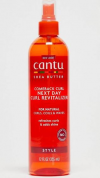I still need to check YT, but I did find this (
https://earthenmamma.com/3-ways-to-dry-microgreens-and-why-you-should/)
How to dry microgreens
Drying microgreens is not a common practice because they are typically consumed fresh, but here are three methods and reasons why you might consider drying them:
3 reasons to dry microgreens
Extended shelf life: Drying microgreens removes moisture, which helps prevent spoilage and extends their shelf life.
Convenience: Dried microgreens are convenient to store and use year-round, especially when fresh microgreens are not readily available.
Nutrient retention: Proper drying methods can help retain the nutritional value of microgreens, allowing you to enjoy their health benefits even when they’re not fresh.
Air drying
Air drying preserves the microgreens by removing excess moisture, which helps prevent mold growth and extends their shelf life.
- Lay the microgreens in a single layer on a clean kitchen towel or paper towel.
- Place them in a well-ventilated area away from direct sunlight.
- Depending on humidity levels, allow them to air dry for several hours to a day.
- Once dried, store them in an airtight container in a cool, dry place.
Dehydrating
Dehydrating microgreens preserve their nutrients and flavor while removing moisture, making them shelf-stable for longer.
- Use a food dehydrator set to a low temperature (around 95°F to 115°F).
- Arrange the microgreens on the dehydrator trays in a single layer, ensuring good air circulation.
- Dry them for several hours until they are crispy and brittle.
- Store the dried microgreens in an airtight container away from light and moisture.
Oven drying
Oven drying quickly removes moisture from microgreens, preserving their nutritional content and flavor.
- Preheat your oven to the lowest setting (usually around 170°F or lower).
- Place the microgreens on a baking sheet lined with parchment paper.
- Put the baking sheet in the oven and leave the door slightly ajar to allow moisture to escape.
- Check the microgreens periodically and remove them once they are dry and crispy.
- Store dried greens in an airtight container once cooled.
I'll see if I can find her videos.






 You should join us!
You should join us!



 I also think I'm just gonna do the Fenugreek 2-3 days a week and the other days might be a tea of some other herbs I have on hand. I'll probably be going back to cornrows soon so that'll make things even easier.
I also think I'm just gonna do the Fenugreek 2-3 days a week and the other days might be a tea of some other herbs I have on hand. I'll probably be going back to cornrows soon so that'll make things even easier.

